 Music
Music  Music
Music  History
History 10 Less Than Jolly Events That Occurred on December 25
 Weird Stuff
Weird Stuff 10 Funny Ways That Researchers Overthink Christmas
 Politics
Politics 10 Political Scandals That Sent Crowds Into the Streets
 Weird Stuff
Weird Stuff Ten Bizarre Facts About The Doge Meme
 Our World
Our World 10 Ways Your Christmas Tree Is More Lit Than You Think
 Movies and TV
Movies and TV The 10 Coolest Stars to Set Sail on The Love Boat
 History
History 10 Things You Didn’t Know About the American National Anthem
 Technology
Technology Top 10 Everyday Tech Buzzwords That Hide a Darker Past
 Humans
Humans 10 Everyday Human Behaviors That Are Actually Survival Instincts
 Music
Music 10 Surprising Origin Stories of Your Favorite Holiday Songs
 History
History 10 Less Than Jolly Events That Occurred on December 25
 Weird Stuff
Weird Stuff 10 Funny Ways That Researchers Overthink Christmas
Who's Behind Listverse?

Jamie Frater
Head Editor
Jamie founded Listverse due to an insatiable desire to share fascinating, obscure, and bizarre facts. He has been a guest speaker on numerous national radio and television stations and is a five time published author.
More About Us Politics
Politics 10 Political Scandals That Sent Crowds Into the Streets
 Weird Stuff
Weird Stuff Ten Bizarre Facts About The Doge Meme
 Our World
Our World 10 Ways Your Christmas Tree Is More Lit Than You Think
 Movies and TV
Movies and TV The 10 Coolest Stars to Set Sail on The Love Boat
 History
History 10 Things You Didn’t Know About the American National Anthem
 Technology
Technology Top 10 Everyday Tech Buzzwords That Hide a Darker Past
 Humans
Humans 10 Everyday Human Behaviors That Are Actually Survival Instincts
Top 10 Exotic Pets You Can Buy (But Probably Shouldn’t)
Whether you want to be that guy at a party with an iguana on your shoulder, or you just can’t live without an adorable little monkey, odds are, you’re into exotic pets! The exotic pet trade is global, and it includes many cute and interesting animals.
Of course, not everything available is necessarily a good pet. Some are incredibly difficult to care for, while others are just plain dangerous. These ten critters may have seemed like a good idea at first, and there are places where you can own them, but you absolutely shouldn’t.
Top 10 Exotic Pets That Killed Their Owners
10 Prairie Dogs
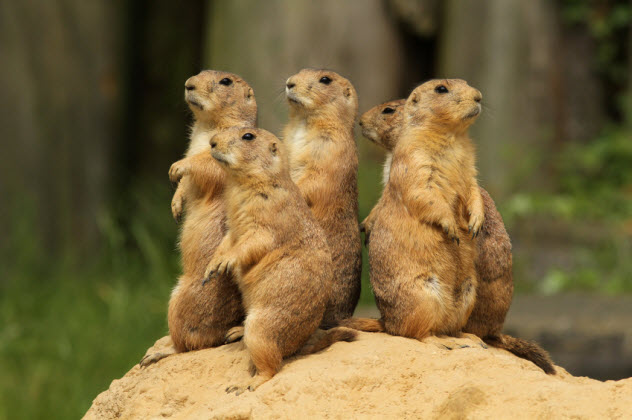
Prairie dogs are adorable rodents found throughout the Great Plains of the United States. They are often seen standing outside their burrows as lookouts for predators. Prairie dogs are a type of ground squirrel, though they don’t have long bushy tails. Regardless, they are cute little critters, so many people have taken them in as pets.
This is probably the worst thing you can do, but not because of potential damage to your home. Prairie dogs are social creatures that live in family groups of between 15 and 26 individuals. These groups are called “towns,” and they can span a large area. Inside their groups, prairie dogs engage in grooming and oral contact called “kissing.”
Depriving a prairie dog of its social grouping means you will have to take the place of dozens of prairie dogs. Taking one as a pet means you’ll have to spend several hours each day grooming and caring for your prairie dog. This may be fun at first, but eventually, the little furball will see less and less of you (in most situations).
Some people have taken in prairie dogs and managed to care for them properly. However, it’s recommended you take in more than one. Caring for them is difficult and time-consuming, so keeping these critters is a responsibility few can fulfill. Ultimately, it’s far better to leave them alone and watch them from afar.
9 Fennec Foxes
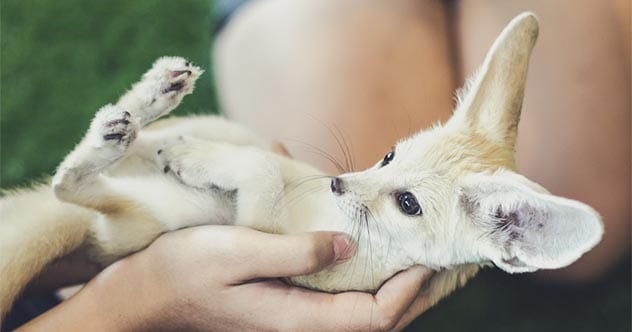
Fennec foxes are one of the few foxes taken in as pets, and they are best known for their large ears. They are the smallest of all the canids, weighing less than 3 lbs. (1.3 kg) at most. Their large ears, small size, and adorable features make them desirable as pets (They look like Pokémon). Still, you need to know what you’re getting into if you adopt one.
Fennec foxes are crepuscular by nature, so they are most active at twilight. Even if they are tamed, this isn’t likely to change, so you’re getting a pet that would undoubtedly wake you early in the morning or keep you up at night. They also love to dig and have been known to create large holes, looking for insects to eat.
It is illegal to own Fennec foxes in most places, so you’ll want to check with your local laws to make sure you can have one. If you cross that hurdle, you’ll need to feed your pet properly, and regular dog food won’t cut it. It can become a large part of their diet, but they’ll need more.
You have to supplement their diet with fresh fruit, vegetables, and freshly killed rodents. They will live longer in captivity (14 years instead of 10), but they require a lot of specialized attention and accommodation. They should not be adopted lightly, so do your research and prepare accordingly if you insist on having one.
8 Servals
A serval is a species of wild cat found throughout the non-rainforest regions of Africa. They evolved to have the longest legs of any cat (relative to body size) and are often spotted with a golden-yellow coat. They are gorgeous animals, and while they look somewhat like a domesticated cat, that’s not what they are.
Some serval cats have been tamed, but they aren’t a domesticated species. Despite this, they have held a place in human history for quite some time. Their representation has been found in 4,000-year-old Egyptian art. They were often given as gifts from Nubia, but today, they’re a part of the exotic pet trade.
Servals are illegal to own in many places, but some parts of the world welcome them as pets. The biggest problem with keeping them as pets is that people think of them as a sort of exotic cat. In a way, they are, and they aren’t, but the biggest difference between the two is the Serval’s need for a large area to explore and hunt.
They aren’t going to be content sitting on a bed in your apartment — these animals need to stretch those long legs! They require special (expensive) diets and often need specialized veterinary care. They also mark their territory and don’t adjust to litter boxes well. Ultimately, it’s far better to adopt a standard-issue housecat and leave servals to their natural environment.
7 Capybara
The capybara is the largest rodent species, and it looks a lot like a giant guinea pig. Like everything on this list, they are cute and fascinating animals, which can be adopted as pets. Of course, they’re on this list, and you should avoid adopting them for various reasons.
Like prairie dogs, capybara are social creatures, and they usually move about in groups of 100 individuals. Some live in smaller groups, but they are never alone, and they should never be left alone. They’re rather large, but saying these are the largest rodent species may not paint the right picture.
When they think of rodents, people tend to picture mice or other small animals, but these guys can grow to two feet in height (0.6 meters) and weigh in at 170 lbs. (77 kg). That’s significantly larger than most dogs, and because these are social animals, you can’t keep only one… you’re going to need to get several.
Capybara are legal to own in very few places, and if you do keep them, you’re going to need ample space. They will need a pool of standing water and around 12 feet by 20 feet (3.6 to 6 meters) of space per pair of capybara. They may be cute, but keeping them as pets is costly, challenging, and inadvisable.
6 Kinkajous
Kinkajous, also known as “Honey Bears,” are small frugivorous mammals native to Central and South America. They are related to raccoons, and while they look a bit like primates, they aren’t related to them. They live in the trees and are nocturnal, so they don’t interact with people in the wild.
They are hunted in their natural habitat for the exotic pet industry, though it can be difficult to purchase one. Still, you can get kinkajous as pets in some parts of the world, but like everything on this list, you shouldn’t unless you have a lot of time, money, and space.
Kinkajous may be kept as pets, but they are rarely considered tame. They tend to scratch and bite their keepers in zoos and in homes, so they don’t make for great pets. Their saliva carries dangerous bacteria, which can cause severe and potentially deadly reactions in some people if they are bitten.
Aside from the potential danger, it’s difficult to house a kinkajou in an environment suitable for them. They live in dark rainforests, so they have light, humidity, and flora requirements that can be difficult to maintain. You can get them as pets, but it’s best to leave these creatures in their native habitat.
5 Sloths
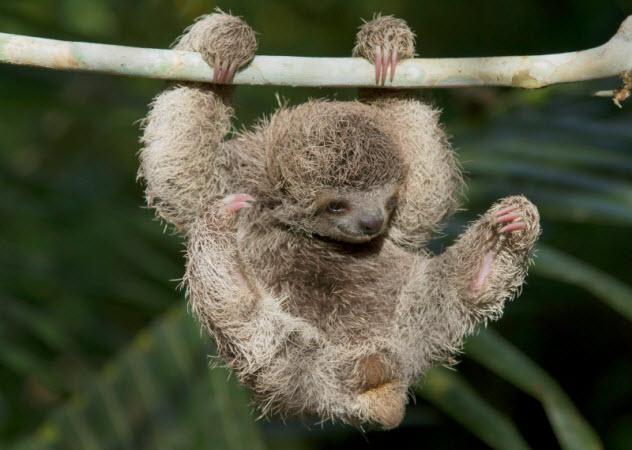
Sloths have become popular critters, thanks to the plethora of photographs and videos shared online. They are adorable little slow-moving animals, and pretty much anyone who sees one immediately wants to adopt it as a pet. They are actually legal to own in many places, leading people to believe they could be good family pets. Of course, they’re on this list, so they aren’t!
Sloths may seem cute, so they don’t seem threatening, but they are wild animals. Sloths haven’t been domesticated, and they need to remain in their natural habitat. They thrive in the canopy of tropical rainforests and don’t do well in captivity, even if you take great care of them.
Despite appearances, sloths can be dangerous to people. They have large sharp teeth, and they aren’t afraid to use them. A bite can deliver a bacterial danger to a human, but more than that, they are strong. Pound for pound, a sloth is three times stronger than an average person, so an aggressive sloth can be dangerous.
For the most part, a sloth makes for a lousy pet because it’s stressful for the animal. These aren’t creatures accustomed to humans, so they don’t adapt well to captivity. While it’s true they will live longer if well cared for, they are best left to trained keepers or their natural habitat.
4 Monkeys
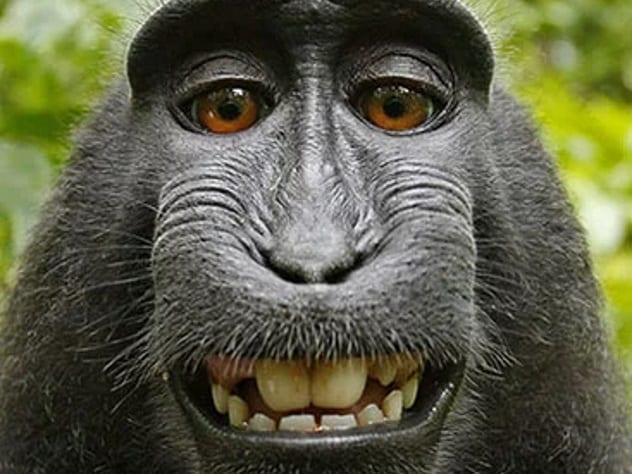
There’s no denying that monkeys are adorable. They look like furry little babies you can play with and enjoy. Even Ross had one on Friends for a little while, though David Schwimmer said how much he hated working with it. Monkeys are cute, but they don’t make great pets.
It is legal (in some places) to adopt a monkey, and there are several options. You can legally adopt a capuchin, guenon, tamarin, marmoset, macaque, or squirrel monkey. Ross had a capuchin, which is the most common monkey pet. They are also often used as animal actors, so you’ve probably seen them acting cute on TV.
The reality of owning a small monkey is far different than whatever makes it out of the editing process on a TV show. They can be expensive to buy (around $7,000 and up), and caring for them is also costly. They require diapers, special food, specialized veterinary care, and a lot of attention.
Monkeys can become aggressive and dangerous to you and your family. They can’t be kept in a small home either, as they require a large area to jump and climb. Keeping them in the house is often seen as cruel, so if you want to see a monkey, the best thing you could do is head to your local zoo.
3 Chimpanzees
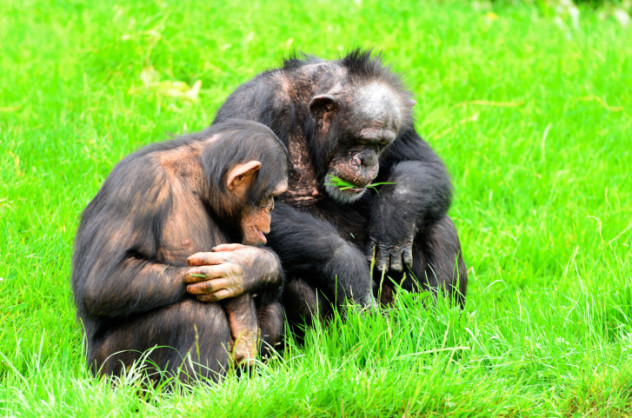
If your interest in primates extends beyond monkeys, you may decide to bring a chimpanzee into your home. These members of the Great Ape family are our closest animal relatives, so they would make excellent pets, right? No, no, and a thousand more noes! Unfortunately, keeping a chimp is not a good idea.
Regardless, you can keep them in pets in some areas of the world, though it’s illegal in most places. Like monkeys, they require diapers outside their enclosures, as they’ve yet to master toilets. If that doesn’t dissuade you from getting one, they can live for up to 60 years in captivity and require a massive amount of time, money, and attention.
If you’re still on the fence about getting a chimpanzee as a pet, you need to understand that these creatures are unpredictable and incredibly strong. A chimp can weigh up to 154 lbs. (70 kg) and stand as much as 4 feet 11 inches (150 cm). They are also around 1.5 times stronger than a human.
Chimps have been known to become enraged and maul humans. They have the strength to rip a person’s face off. Literally. They are dangerous to strangers and their caregivers, so do as the good Dame Jane Goodall advises, and do not try to keep a chimpanzee as a pet!
2 Tigers
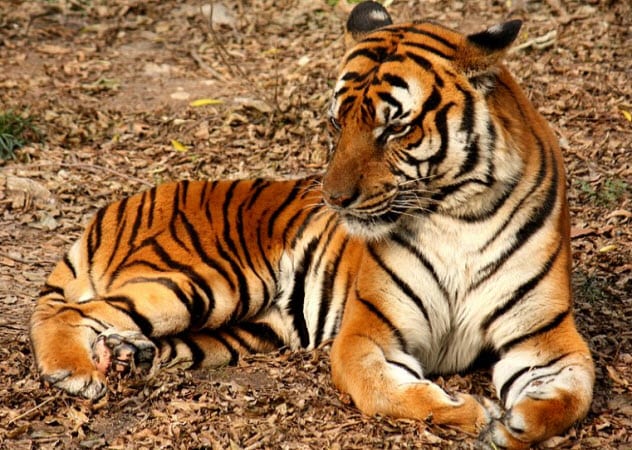
If you watched Tiger King, you’re probably aware of the sad fact that there are more tigers in captivity in the United States than there are in the wild. It’s unfortunate but true, and the numbers are staggering. Around 5,000 of the big cats reside in the U.S., while only an estimated 3,900 are in the wild.
Despite being the largest cats in the world and an apex predator, people have been keeping tigers as pets for centuries. Tigers are, in no way, domesticated animals. They can be kept as pets in loving environments, but at the end of the day, you’re bringing a 600 lb. (272 kg), 11 foot (3.3 meters) monster of teeth and muscle into your home.
While many tigers live in the States, they are illegal to keep in most places. The biggest problem with keeping a tiger is that they need a large area and a lot of food to remain healthy. You can’t take them to the local vet either, so you’re looking at a massive expense that is always hungry.
Captive tigers eat around 9-18 lbs. (4-8 kg) of raw meat five days a week. On top of that, they need to roam in a territory of up to 40 miles (64 km) for males. Females can work with a smaller area, but most people can’t accommodate either. They can be incredibly dangerous, and they can and will eat you should they choose to do so — there’s not a lot you can do to stop that.
1 Bears

Bears are the largest land carnivore roaming the world today. While they do look adorable, they are insanely dangerous. Depending on the species, some bears can grow to massive proportions, and their claws are like small blades attached to all of their paws (which are huge). Despite this, there are plenty of people who have kept them as pets over the years.
Caring for a bear is as difficult as it sounds, but some people do it. They can very rarely make good pets, but only to certain people in very specific situations. Most countries do not allow their citizens to keep bears as pets, but some areas permit special licenses. Still, it’s not advised to take a bear home with you if you’re not a professional keeper… even then, it’s inadvisable.
Bears are large animals weighing up to 1,500 lbs. (680 kg), and they grow quickly. A bear cub can grow into an adult in very short order, and caring for them is not easy. They require a lot of food and a large enough place for them to roam about. They aren’t going to be happy in a small enclosure.
If your pet bear decides it doesn’t like you anymore, that’s pretty much it. In the war between human and bear, the human doesn’t come out on top. These are massive beasts with sharp claws, huge teeth, and the strength to tear a person apart.
10 Uncomfortably Odd Stories Of Exotic Pets








